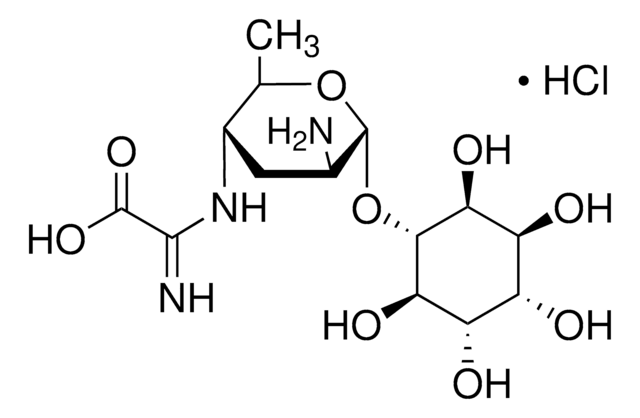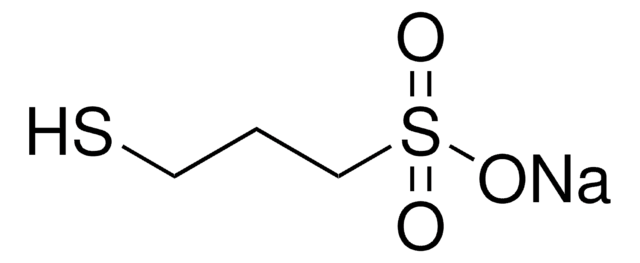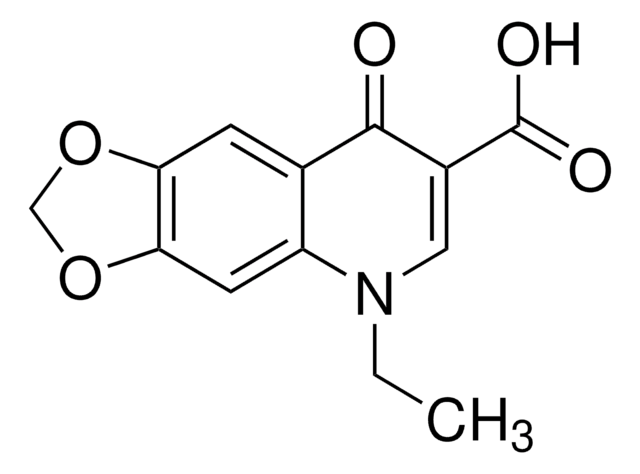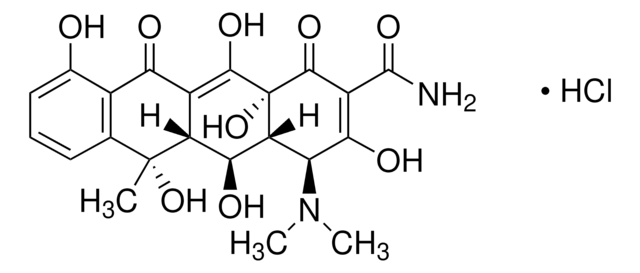K4013
Kasugamycin hydrochloride from Streptomyces kasugaensis
Synonym(s):
3-O-[2-Amino-4-[(carboxyiminomethyl)amino]-2,3,4,6-tetradeoxy-D-arabino-hexopyranosyl]-D-chiro-inositol
About This Item
Recommended Products
biological source
Streptomyces kasugaensis
Quality Level
form
powder
color
white to off-white
antibiotic activity spectrum
Gram-negative bacteria
Gram-positive bacteria
mode of action
protein synthesis | interferes
storage temp.
2-8°C
SMILES string
C[C@H]1O[C@H](O[C@H]2[C@H](O)[C@@H](O)[C@@H](O)[C@H](O)[C@@H]2O)[C@@H](N)C[C@@H]1NC(C(O)=O)=N.Cl
InChI
1S/C14H25N3O9.ClH/c1-3-5(17-12(16)13(23)24)2-4(15)14(25-3)26-11-9(21)7(19)6(18)8(20)10(11)22;/h3-11,14,18-22H,2,15H2,1H3,(H2,16,17)(H,23,24);1H/t3-,4+,5+,6-,7+,8+,9-,10+,11+,14-;/m1./s1
InChI key
ZDRBJJNXJOSCLR-NZXABURVSA-N
Looking for similar products? Visit Product Comparison Guide
Related Categories
General description
Application
Biochem/physiol Actions
Storage Class
11 - Combustible Solids
wgk_germany
WGK 2
flash_point_f
Not applicable
flash_point_c
Not applicable
ppe
Eyeshields, Gloves, type N95 (US)
Choose from one of the most recent versions:
Already Own This Product?
Find documentation for the products that you have recently purchased in the Document Library.
Our team of scientists has experience in all areas of research including Life Science, Material Science, Chemical Synthesis, Chromatography, Analytical and many others.
Contact Technical Service







